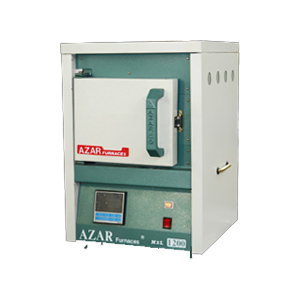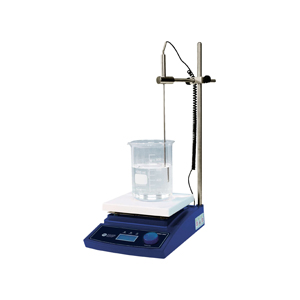Furnace

The furnace from AZAR Co. (M2L-1200) can reach up to 1200 °C. It is programmable and the dimension inside the furnace is 12*10*18 cm3.
Below, You can reach some useful information and instructions about the device.

The furnace from AZAR Co. (M2L-1200) can reach up to 1200 °C. It is programmable and the dimension inside the furnace is 12*10*18 cm3.
Below, You can reach some useful information and instructions about the device.

The hot plate and stirrer from Witeg (MSH-20D) with the maximum speed of 1500 rpm and highest temperature of 380 °C equipped with temperature feed back probe.

Semi-Micro analytical balance from AND company of Japan. The model of our balance is HR-200i and the accuracy is 0.1 mg.
Below, you can reach some useful information and instructions about the device.
Safety and Maintenance Sheet (Persian)
The 2D materials are generally composed of strong covalent bonds leading to in-plane stability and weak van der Waals bonds, which sustain the stacked layer structure. Following the discovery of graphene in 2004, a new horizon has opened up for exploring other 2D layered materials such as transition metal dichalcogenides (TMD), transition metal oxides, graphitic carbon nitride (GCN), and hexagonal boron nitride (h-BN). These 2D materials can be integrated with a three dimensional (3D) SC material as a new building block to fabricate interfacial heterostructures. The electrocatalytic activity of this material strongly depends on its quality and morphology. For instance, defects and oxygen-containing groups may increase graphene electrocatalytic properties, while simultaneously reducing its electrical conductivity if they damage the conjugated Π structure.
In order to store sustainable energy, such as solar energy, and transform it into current power, photocatalytic or photoelectrochemical reactions in water splitting for hydrogen generation are promising candidates. Numerous informative papers on nanostructures for oxygen evolution reactions (OER) have been published. In addition, significant reports on applying 2D materials as counter electrodes in solar cells and/or water splitting devices, providing a thorough comparison concerning various synthesis and characterization methods of this class of new materials as well as their performance as a CE.
However, in many cases, the 2D materials themselves are neither photocatalysts nor photoelectrodes; however, these materials have been successfully applied as sensitizers, electron mediators, co-catalysts, and protective layers in combination with other SC materials. The 2D/SC hybrid materials can induce synergetic effects and ultimately improve the electrical, optical, and PEC properties of 2D/SC electrodes. Here, review of recent trends in this subject is available:
School on Design, Fabrication and Application of Devices for Energy Production will be held in ICTP, Triste, Italy from 13 to 16 of May, 2019. The school focus on sun light conversion to energy and chemical fuels and on the ethical and sustainable use of natural resources. It will be a forum for discussion on new science and technology integration to ensure a sustainable future for people and planet. More information about scopes and deadlines can be found here.
25th annual meeting on condensed matter physics will take place in Institute of Advanced Studies in Basic Science, Zanjan, Iran, 23-24 of Khordad 1398. The aim of this meeting is to bring together experimental and theoretical scientists in the field of condensed matter physics to present their recent results and to make an atmosphere for discussion. Moreover it is a good opportunity for young researchers and students to gain experience by joining this community. More information is accessible here.
Thanks to International Affairs Office at Sharif University of Technology, there are many opportunities for B.Sc., M.Sc. and Ph.D. students to participate in joint degree and exchange programs. A variety of universities/centers mainly from Europe and Asia have been offered. You may find more details about conditions and deadlines here.
